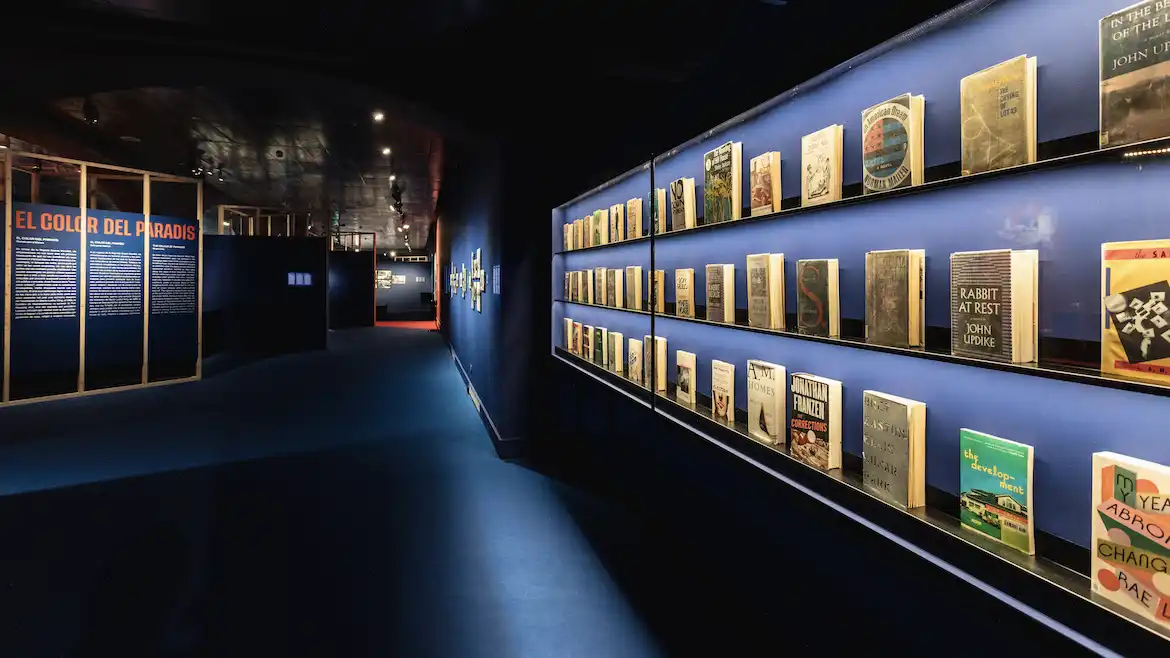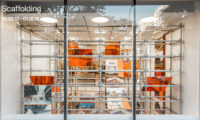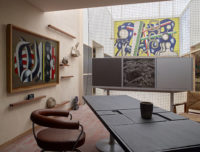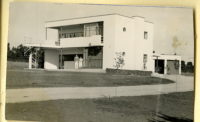A New Exhibition in Barcelona Explores the Growing Diversity of American ‘Suburbia’

.webp?t=1713287093&width=1080)
.webp?t=1713286996&width=1080)

.webp?t=1713286973&width=1080)

.webp?t=1713287093&width=150)
.webp?t=1713286996&width=150)

.webp?t=1713286973&width=150)

Weronika Gęsicka, Untitled #5 of the series Traces, 2015-201; digital print. Image courtesy the artist and Galeria Jednostka, Warsaw
American suburbia is both a geographical space and a historical one. When we use the term, we are referring to clearly identifiable places: large extensions to the nation’s great cities, predominantly for white middle-class populations that grew affluent in the years after World War II. By its sheer scale, it is still the greatest transfer of wealth to the largest number of people in human history, Chinese urbanization notwithstanding. Yet as Philipp Engel, the curator of Suburbia: Building the American Dream, a new exhibition at Centre de Cultura Contemporània de Barcelona (CCCB), puts it: “Suburbia is as much a mental image as it is a changing landscape.” His unexpected yet vital and inquisitive show makes a spirited attempt at addressing both qualities, the very real physical environs of suburban America, but also its culture, in all the multifold meanings of that word.
The eclectic approach—Suburbia presents a huge range of plans, films, and models—is consistent with the history of the CCCB, a singular institution born from the positive urban effect on Barcelona of the Olympics in 1992. The Catalan city underwent a large-scale reinvention spurred primarily by a successful revitalization of public space across the city: addressing their degraded physical and social condition in the long aftermath of Franco’s dictatorship. The CCCB reflects the role that design played in this improvement in its wide-ranging exhibition and lecture programming, exploring the role of planning and architecture embedded within a wider culture.

Installation view of Suburbia: Building the American Dream at Centre de Cultura Contemporània de Barcelona. Photo © CCCB, 2024 Cris Palomar
It is a strategy that suits the suburban subject well. In the first section of this open-minded exhibition Engel shows how the logic of early settlement and colonization would determine future development. Alexander Jackson Davis’s drawing of a castellated villa for dry-goods merchant John J. Herrick in Tarrytown, New York, in 1855 is contrasted with a plan of Llewellyn Park in New Jersey, one of the first planned communities in the United States, designed also by Davis around the same time. The trappings of the English country house are toned down and the landscaping is co-opted to sell a greater volume of houses to a wealthy middle-class audience. The promise of suburban living expands in the 20th century but this reference to Anglo landed gentry endures, even as it is thinned out.

A 1950 mail-order catalog for the Aladdin Company. Image courtesy Historic New England
If the introductory stages of Suburbia are told in plans and promotional imagery, the later ones focus on film. As soon as it was popular, the moving image became the medium of American self-criticality. The brilliant Buster Keaton sequence from One Week (1920) is not just a series of spectacular theatrics but also a satire on the flimsiness of ad hoc construction of the era. Indeed, the exhibition shows that there is no more compelling artistic mode in 20th-century America as suburban self-critique. The film adaptation of John Cheever’s deceptively surrealist 1964 short story, The Swimmer, is shown as is a full episode of The Twilight Zone from 1961 in which neighbors war over the use of a bomb shelter. It ends with the narration: “for civilization to survive, the human race has to remain civilized.”
Suburbia grows into a chorus of increasingly diverse voices, which gather in range and volume throughout the latter 20th century and early 21st century sections of the exhibition to evoke and critique the colossal material production they inhabit. The balance between reality and self-image skews slightly and Suburbia becomes predominantly a collection of work, made by artists grasping popular form—such as the television series, photo essay, and comic book—to seek out the realities and true purposes of suburban life. Here we see cultural suburbia addressing the falsehood that societies can be created that are somehow immune to social problems. Set within a display about the racist dimension to how suburban developments were sold, financed, and policed, Norman Rockwell’s New Kids in the Neighborhood is even more remarkable: a key moment in America’s social history captured in a sentimental newspaper illustration. The exhibition is interested in what emerges from suburban America rather than what remains.

Bill Owens, I don't think Richie's playing with guns should have a negative effect on his personality (he already wants to be a cop), 1972; gelatin silver print. Image courtesy Bill Ownens Archive, Milan
If the dominant narrative turns pessimistic towards the end, it’s to kill this notion that suburbia was a haven from the pathologies of urban America, even if geographical and historical reality becomes secondary. There is a more positive alternative to this negative narrative, but it is somewhat hidden. We see Jessica Chou’s photographic series Suburban Chinatown, perhaps the first great visual work to show how a place once known for conformity was becoming increasingly heterogeneous in all qualities—class, wealth, race, and religion. (Seeing photographer Bill Owens' still-unparalleled collection Suburbia in this context questions whether the suburbs ever really were the homogeneous spaces that we assumed.) Kate Wagner’s McMansion survey is legible in this context as an extreme manifestation of the growing apostasy to be found in America’s hinterland but this time in an architectural rather than demographic way. In her essay in the excellent accompanying catalog, the urban planner and architectural historian Margaret Crawford describes this process of demographic enrichment eloquently and the depiction could have gone further in the show.



Photos © CCCB, 2024 Cris Palomar
Still, this is a tremendous exhibition, the product of a steady gaze from afar at America’s prevailing urban condition—and not just its built environment but also as a site of cultural production. Although it is critical—car culture gets its time to shine and then be criticized—Suburbia and its attendant talk series are more even-handed than American curators would have allowed. Speaking as a Brit reviewing a show about American suburbia staged in Spain, it is notable that domestic commentators tend to be far more critical of their own suburban condition than interlopers are. If the final element of the exhibition that relates to the conditions surrounding Barcelona seems perfunctory, that’s because hitherto the exhibition has been so wide-ranging, so convincing, and so enjoyable.
Suburbia is on view at Centre de Cultura Contemporània de Barcelona through September 8, 2024.






.webp)
.webp)

.webp)